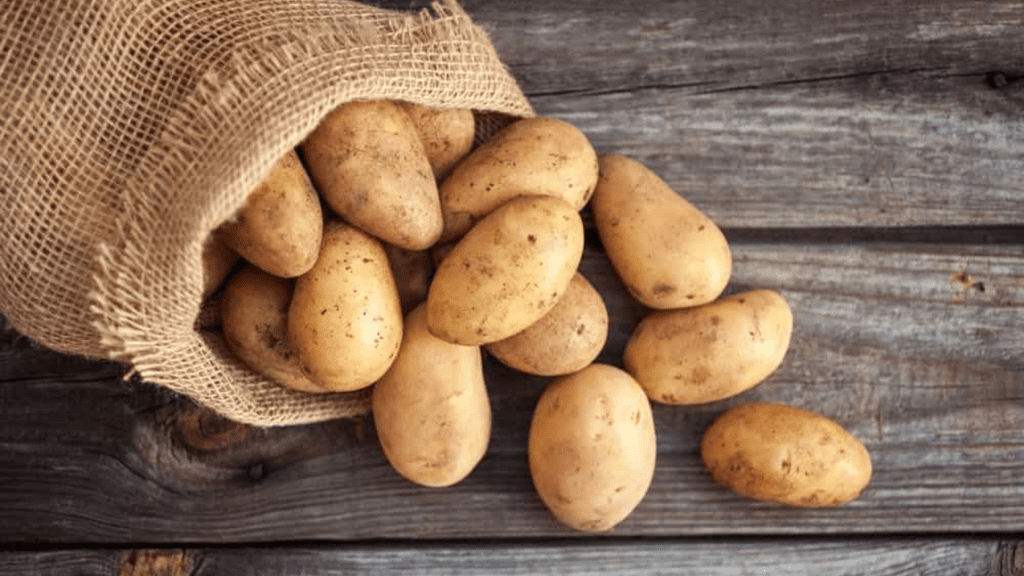As an Indian, whether you are a fan of veg or non veg, one thing that binds us all in every cuisine across the country is potatoes! But the real struggle is sprouting on them.
So, if you are tired of your potatoes going bad before you get the chance to use them?
Potatoes are a versatile and beloved staple in many households, but their shelf life can be a challenge. Whether you’re dealing with a surplus from a bountiful harvest or simply want to extend the lifespan of store-bought potatoes, these practical tips and tricks will help you maximize their longevity. Say goodbye to sprouting, softening, or rotting potatoes, and say hello to a well-stocked pantry of perfectly preserved spuds. Get ready to learn the secrets to keeping your potatoes fresh and delicious for an extended period, so you can enjoy them in all your favorite recipes without any waste. Let’s dive into the world of potato storage hacks and make those taters last!
How to Check if your Potatoes have gone Bad?- Shelf Life and Different Conditions
The shelf life of potatoes can vary depending on various factors such as the variety of potato, storage conditions, and initial quality. On average, potatoes can typically last anywhere from 2 to 5 weeks when stored properly. However, with the right techniques, it’s possible to extend their shelf life even further.
To check if a potato has gone bad, there are a few signs to look out for. First, visually inspect the potato for any visible mold, sprouts, or wrinkling. Moldy spots or a fuzzy texture indicate spoilage, and sprouting may indicate that the potato has started to deteriorate. Next, feel the potato’s texture. If it feels soft, spongy, or has a mushy consistency, it’s a clear sign that it has gone bad. Finally, give it a sniff. If there’s an unpleasant odor, especially a musty or rotten smell, it’s a strong indication that the potato is no longer suitable for consumption.
How to Store Potatoes so they Don’t Sprout?
To store potatoes properly, follow these guidelines:
- Choose a cool, dark, and well-ventilated location: Find a place in your home that stays cool and maintains a temperature between 45-55°F (7-13°C). Avoid storing potatoes in areas that are too warm or exposed to sunlight.
- Keep them dry: Moisture can cause potatoes to spoil quickly, so make sure they are dry before storing. Remove any dirt or excess moisture by gently wiping them with a clean cloth or paper towel.
- Avoid exposure to light: Potatoes exposed to light can turn green and produce a bitter flavor. Store them in a dark place, such as a pantry or a paper bag, to prevent exposure to light.
- Do not wash before storing: It’s best to leave the potatoes unwashed until you’re ready to use them. Washing them beforehand can remove the protective layer on the skin, making them more prone to spoiling.
- Separate from other produce: Potatoes release ethylene gas, which can cause other fruits and vegetables to spoil faster. Keep potatoes separate from other produce to prevent accelerated ripening or decay.
- Check for spoilage regularly: Periodically inspect your stored potatoes for any signs of spoilage, such as mold, soft spots, or sprouting. Remove any damaged potatoes to prevent the spread of spoilage to others.
- Store them in breathable containers: Avoid using plastic bags or airtight containers, as they can trap moisture and lead to rot. Instead, use a breathable container like a paper bag, a mesh bag, or a well-ventilated crate to allow for airflow.
By following these storage tips, you can help prolong the shelf life of your potatoes and keep them fresh for a longer time. Remember to check them regularly and use any damaged or sprouted potatoes first to minimize waste. Enjoy your potatoes in various delicious recipes!
